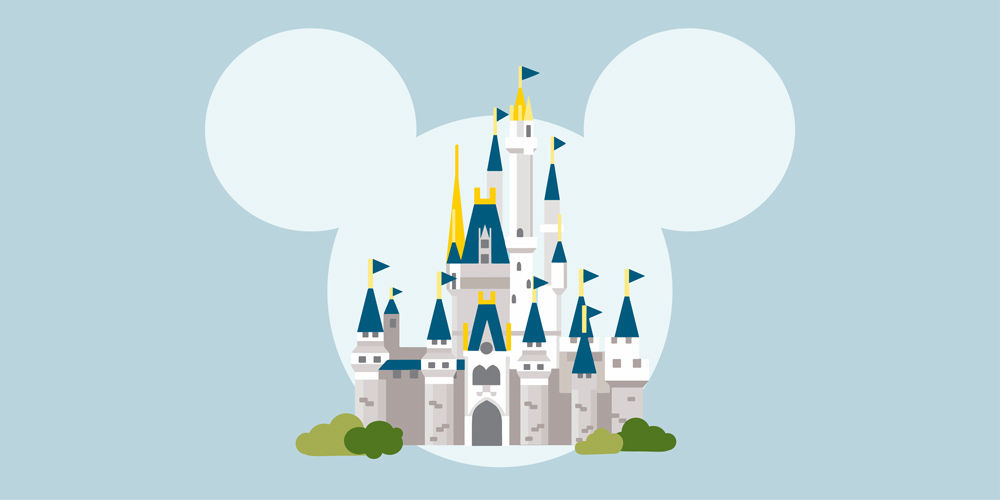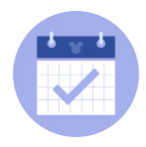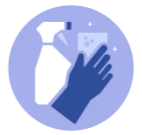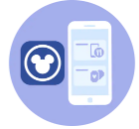Planning a Disney World Trip in 2022?
Here are 18 things to know and 41 comments with responses from the Undercover Tourist.
Getting ready to rediscover Walt Disney World Resort?
Here are the Top Four things to know before you go in 2022:
What does "High Reliability" mean?
“High reliability” accurately describes the goal of health care systems. Highly reliable organizations use processes that are exceptionally consistent and avoid potential harm.
Anyone who’s taken a trip to Disney World will see the parallels—lots of room for things to go wrong. Here, Brittany shares how to do it without losing your sanity.
6 parks in 7 days for 12 people
Planning a vacation for your multi-generational family is challenging—especially when it’s the first trip to Disney World for two young kids and likely the last for the grandparents. I wanted to make sure everyone had a memorable time, so I took the lead on planning. It’s sort of my thing, and my family is kind enough to oblige me.
We spent seven days in Florida, but we still had to be smart about our plan. Disney World has four different parks and Universal Studios has two. On top of that, we visited in early April—not peak Spring Break, but still projected to be busier than normal. I knew a successful trip would require plenty of pre-work.
Four strategies hold true for planning any vacation:
1. Do your research
Several calendars are available online that provide park-specific projected crowd levels—some even drill all the way down to projected ride wait times during different parts of the day. I created my own spreadsheet that looked like this:

2. Identify the common pain points
For this trip, I identified crowds as a big potential pain point. Not only would crowds make it difficult to enjoy many attractions, but my young kids would not be happy. That’s where a spreadsheet like the one above becomes useful—it tracks park hours, which change each day (“Extra Magic Hours” even offer extended hours open only to guests of Disney hotels).
3. Meet your audience where they are, not where you wish they would be
Be honest about your family—this is supposed to be fun, not a forced march! Some members of my family needed more breaks or didn’t want to visit parks. I designed the trip for one day “on” and one day “off.” On some of the “on” days, my kids begrudgingly said, “Disney again? Can’t we just stay in the hotel and relax?” Um, no.
Still, using this schedule, the grandparents could decide what to see and what to skip, while us “kids at heart” could take advantage of the “off” days and go on some of the more intense rides.
Even if I wasn’t a crazy planner (which I totally am), Disney incentivizes planning with advanced dining reservations and FastPass+, a way to jump to the front of the line for three pre-scheduled rides of your choosing. Once the park plans were made, I made dining and FastPass+ reservations for our group. I had to decide which rides we’d want to enjoy during approximate time periods, but it didn’t always work out as planned. When that happened, we adjusted by skipping rides or reorganizing the itinerary.
4. Defining (and learning from) metrics of success
In my day job, I help people clarify their improvement project goals. Before the trip, it made sense to define success as the completion of the daily plan. One day was particularly bad, though, and we only saw about half the attractions on the itinerary. I wrote the day off as a bust, but after the trip, when I asked my family about their best memory, several said that was their favorite day. They enjoyed the pace and the unscheduled “magic fountain,” which delighted the kids and made for a memorable experience.
I’m not saying I’m going to scrap my vacation planning in the future—winging it really isn’t an option at Disney—but I learned that you have to account for and understand the “voice of my customer ” (in this instance, my family). Next time, I’ll do better at both planning and defining what success looks like.
Timeline Tips
With these four strategies, anyone can plan a successful Disney World trip. Here’s the best timeline to follow for each step:
- Do your research. The earlier, the better—Disney World fans know how to make plans, so look at flights, hotels, park tickets, FastPass+, and advanced dining reservations (including character meals) as soon as you and your group are ready to commit. Dining reservations can be made 180 days in advance and popular experiences go quick. Fastpass+ can be reserved 60 days in advance. Use this feature to make sure you get access to popular rides without long wait times.
- Identify the common pain points. This step comes later, a few days to a few weeks before the trip. Consider travel time, weather, energy levels, and specific wishes of your travel companions as you plan a weekly or daily itinerary. Also, don’t forget the “voice of the customer.” Giving family members a chance to weigh in on their must-do’s will allow everyone to have a stake in making the trip a success.
- Meet your audience where they are, not where you wish they would be. This is the frontline, on-the-ground stage—how does everyone feel each morning and night? Don’t be afraid to readjust and reorganize on the fly. Remember, you can plan the plan, but you can’t plan the outcome.
- Defining (and learning from) metrics of success. Maybe you know what you want to accomplish weeks or even months in advance. But reflection is key as the trip winds down. What did everybody love? What did everybody hate? What would you do the same on your next trip to Disney—and what would you change?
Acknowledgement: This post has been updated April 2022 to include Covid-19 updates. Original post day: May 18, 2018.
Brittany Patterson
Every summer, Utahns head to the mountains for camping, biking, rafting and other activities. And every summer, many a family is left without a stove, or a helmet, or a…because it was left at home. Thrill-seeker and quality manager Cindy Spangler wants to prevent your next packing mishap with a customized camping checklist.
Utah's value engineers turn any real-world event into a cause for improvement. Recently, senior value engineer Will McNett and a friend were swept up in an avalanche, traveling 50 yards down the southeast face of Albright Peak in Grand Teton National Park. What many would consider terrifying, Will considered a cause for observation, investigation, analysis, and improvement.
Healthcare isn’t the only industry experiencing whiplash-inducing change. Think about the significant change in the way we travel. We used to hear about a place or a particular hotel from a travel agent or friend, or gasp—the phone book. Today, the number of sites offering advice, recommendations and resources is astounding. In this post, we’re highlighting a few tried and true resources that leverage big data to make travel easier.




